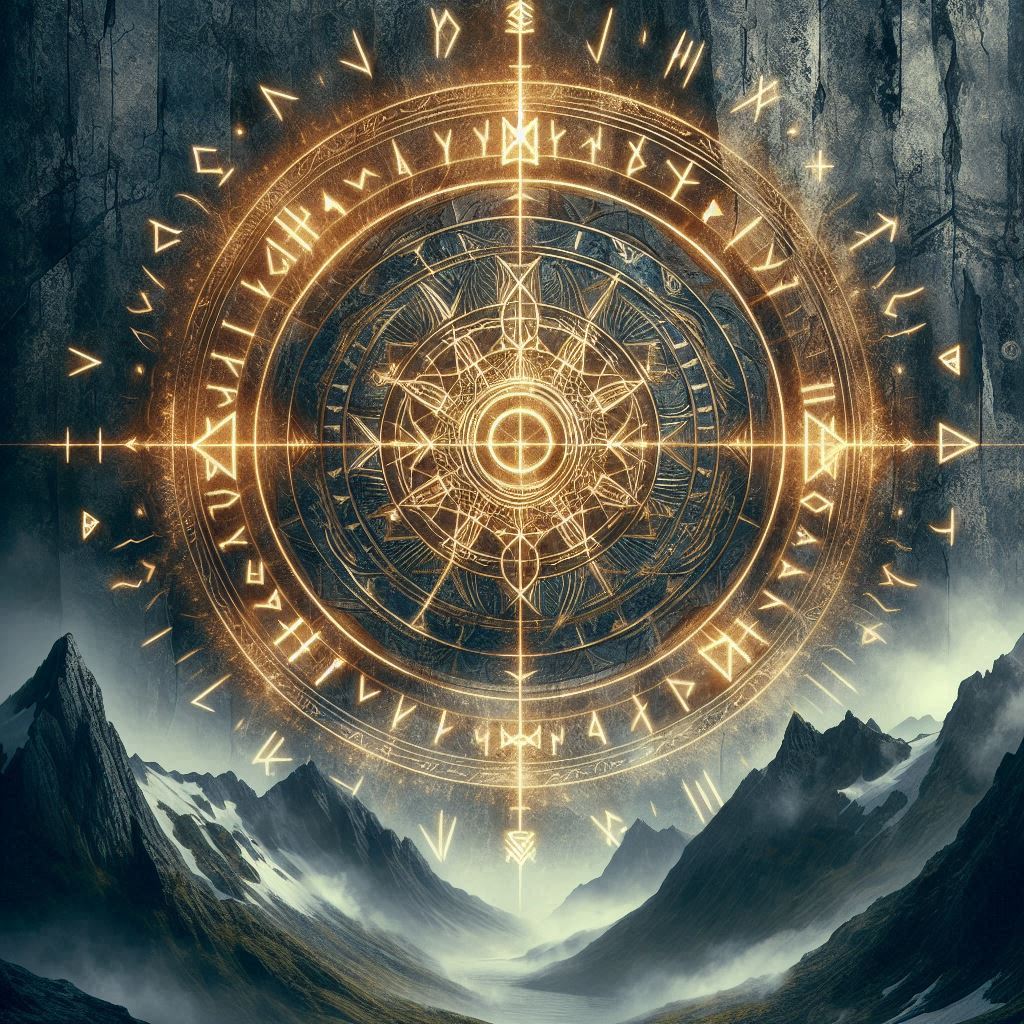
Runes and Their Power: Ancient Symbols in Modern Fashion
Karl FinnbogasonShare
For centuries, runes have been regarded as mystical symbols of power, wisdom, and divine connection.
These ancient letters, originating from the runic alphabets of Germanic, Norse, and Anglo-Saxon cultures, were not only used for writing but also as tools of magic, divination, and protection.
Today, the fascination with runes has extended beyond their historical and spiritual significance into the world of modern fashion. From Viking-inspired apparel to contemporary jewelry, runes have found a place in designs that channel strength, heritage, and mystery.
The Origin and Meaning of Runes
The word "rune" comes from the Old Norse word rún, meaning "secret" or "mystery." Runes were primarily associated with the Elder Futhark, the oldest form of the runic alphabet, consisting of 24 symbols. Later variations, such as the Younger Futhark and Anglo-Saxon Futhorc, emerged with adaptations for different linguistic and cultural needs.
Unlike modern alphabets, each rune was more than just a letter—it carried deep symbolic meaning. Vikings and other Germanic peoples carved runes into stones, weapons, amulets, and everyday objects to invoke protection, strength, wisdom, and luck. Some runes were believed to possess magical properties and were used in divination and rituals to communicate with the gods.
The Power of Individual Runes
While every rune in the alphabet holds significance, some are particularly powerful and commonly found in modern fashion and accessories.
1. Algiz (ᛉ) – The Rune of Protection
- Symbolizes defense, higher awareness, and connection with divine forces.
- Used in Viking-era amulets for safety in battle and spiritual guidance.
- In modern fashion, Algiz appears on necklaces, rings, and tattoos as a symbol of protection and strength.
2. Fehu (ᚠ) – The Rune of Wealth and Prosperity
- Represents material success, abundance, and new beginnings.
- Historically, Vikings inscribed Fehu on objects to attract fortune and luck.
- Frequently used in minimalist jewelry and luxury fashion pieces symbolizing financial empowerment.
3. Tiwaz (ᛏ) – The Warrior’s Rune
- Associated with Tyr, the Norse god of war and justice.
- Represents courage, honor, and the pursuit of justice.
- Common in Viking-themed apparel, particularly on T-shirts, hoodies, and tattoos as a tribute to warrior spirit.
4. Ansuz (ᚨ) – The Rune of Wisdom and Divine Communication
- Linked to Odin, the Norse god of knowledge and poetry.
- Symbolizes inspiration, learning, and leadership.
- Modern designers incorporate Ansuz in artistic fashion collections that emphasize wisdom and intellect.
5. Raidho (ᚱ) – The Rune of Travel and Destiny
- Associated with journeys, personal growth, and fate.
- Historically used by seafarers and explorers for safe passage and guidance.
- Popular in Viking-inspired travel accessories like bags and pendants.
Runes in Modern Fashion: A Revival of Ancient Mysticism
As Norse mythology and Viking culture have grown in popularity, rune-based designs have made their way into fashion, blending history with contemporary aesthetics. Here’s how runes are being used today:
1. Viking-Inspired Clothing
- T-shirts, hoodies, and jackets feature runic inscriptions that symbolize strength, resilience, and heritage.
- Designs often incorporate Mjölnir (Thor’s Hammer), Valknut, and runic patterns, enhancing their connection to Norse warriors.
- Many brands use aged, distressed prints to give an authentic, historical feel to Viking-themed fashion.
2. Rune Jewelry and Accessories
- Necklaces, rings, and bracelets featuring engraved runes offer symbolic protection and empowerment.
- Handmade leather cuffs and silver rune amulets replicate ancient Viking artifacts.
- Some designers incorporate custom runes to create personalized talismans.
3. Tattoos and Body Art
- Many tattoo enthusiasts choose runes for personal empowerment, protection, or connection to Norse ancestry.
- Bind runes, which combine two or more runes for a custom meaning, are a unique way to create personalized symbols.
4. Streetwear and High Fashion Influences
- High-end fashion designers have introduced runic symbols in luxury streetwear, often blending them with gothic and Nordic aesthetics.
- Runic embroidery and metallic embellishments appear in leather jackets, caps, and oversized hoodies.
- Dark, mystical themes are paired with modern silhouettes, merging ancient mysticism with contemporary fashion trends.
Why Are Runes So Popular in Fashion?
Several factors contribute to the increasing use of runes in fashion:
1. Connection to Strength and Heritage
Many individuals wear runic designs as a tribute to their Nordic roots or as a symbol of personal strength and resilience.
2. The Rise of Viking and Norse Mythology in Pop Culture
Movies, TV series (Vikings, The Last Kingdom), and video games (God of War, Assassin’s Creed Valhalla) have reignited global fascination with Viking culture, influencing fashion trends.
3. The Mystical and Spiritual Appeal
Runes carry an air of mystery and power, making them attractive to those who value esoteric and spiritual symbolism.
4. Unique and Timeless Aesthetic
Runes offer a bold, minimalist look that fits seamlessly into modern apparel, tattoo culture, and gothic streetwear.
Wearing Runes with Purpose
Runes are more than just decorative elements; they are symbols of ancient wisdom, power, and destiny. Whether integrated into clothing, jewelry, or tattoos, these mystical inscriptions continue to resonate with those who seek strength, guidance, and a connection to the past.
Our apparel is designed for individuals who embrace Viking heritage, warrior spirit, and the mysteries of the runic alphabet. Whether you wear runes for protection, inspiration, or style, they serve as powerful reminders of the ancient world’s enduring influence on modern fashion.
So the next time you wear a rune-inscribed hoodie, necklace, or T-shirt, know that you are carrying forward a tradition that has spanned centuries—one that speaks of strength, wisdom, and the unbreakable human spirit.
